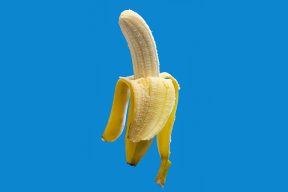Often overlooked, these seasonal fruits and vegetables are the perfect addition to your grocery cart. Packed with nutrients and usable in many different dishes from appetizers to desserts, these foods will add a punch to your daily meals. Try them now before the season is up!
Squash
Butternut and acorn squashes are plentiful this time of year. Low in saturated fats and cholesterol, they are an excellent source of vitamin A and C, potassium, and magnesium. Squash can be used in anything from soup to cookies or simply roasted or mashed for a perfect vegetable option at dinner.
Pumpkin
Like squash, pumpkin is high in vitamins A and C as well as potassium and magnesium, but pumpkin is also a great source of dietary fiber which many of us lack in our diets. Though pie is a delicious”and probably the most popular”way of eating pumpkin it is certainly not the healthiest. Instead, try some pumpkin filled whole wheat ravioli. And don’t throw the seeds away! Oven-roast them for an excellent source of protein.
Apple
Sure, apples are available all year round, but only in the fall do they taste like they actually should. And they taste good. So good that it doesn’t even matter that they are high in vitamin C and dietary fiber. Apples are delicious in desserts, as sauce, dried, or if you are feeling really adventurous, churned into a spread or butter. For a delicious coffee substitute, have a warm apple cider on your way to work. But remember, like all fruit, apples are high in sugar, so be sure to balance your apple consumption with vegetables with low sugar levels.
Swiss Chard
This leafy vegetable is high in folate, fiber, vitamins A, C, E, K, and B6, calcium, iron and potassium. What does this mean? Chard is a source of energy, and lots of it! Though slightly bitter when eaten raw, chard sweetens up when cooked and is perfect for some added colour and nutrients in stir fries and sauté©ed vegetables.
Parsnip
This is the vegetable that you hear about but really have no idea what it actually is, right? Mystery solved. An ideal fall root vegetable, parsnip is the paler, sweeter cousin of the carrot and is often used as a potato substitute. High in potassium, fiber, vitamins C and K, and folate, parsnips can be eaten raw or cooked. Be sure to include parsnips in your stews, soups, and casseroles this season.
Cauliflower
Cauliflower is the sleeper hit of the nutritious vegetable world. A power vegetable when it comes to fighting disease and boosting your immune system, this remarkable food is high in fiber, vitamins C, K, and B6, folate, and potassium. It also contains anti-carcinogens to prevent cancer and detoxifiers that may help to keep your liver healthy. Though most popularly served with cheese sauce, cauliflower can be enjoyed any number of ways including stir fries, soups, stews, or raw for a quick snack. When preparing cauliflower, be sure never to boil it, as this cooks off those wonderful anti-cancer compounds. Instead, if you want to enjoy your cauliflower cooked, opt for steaming, microwaving, or tossing them in a stir fry.











